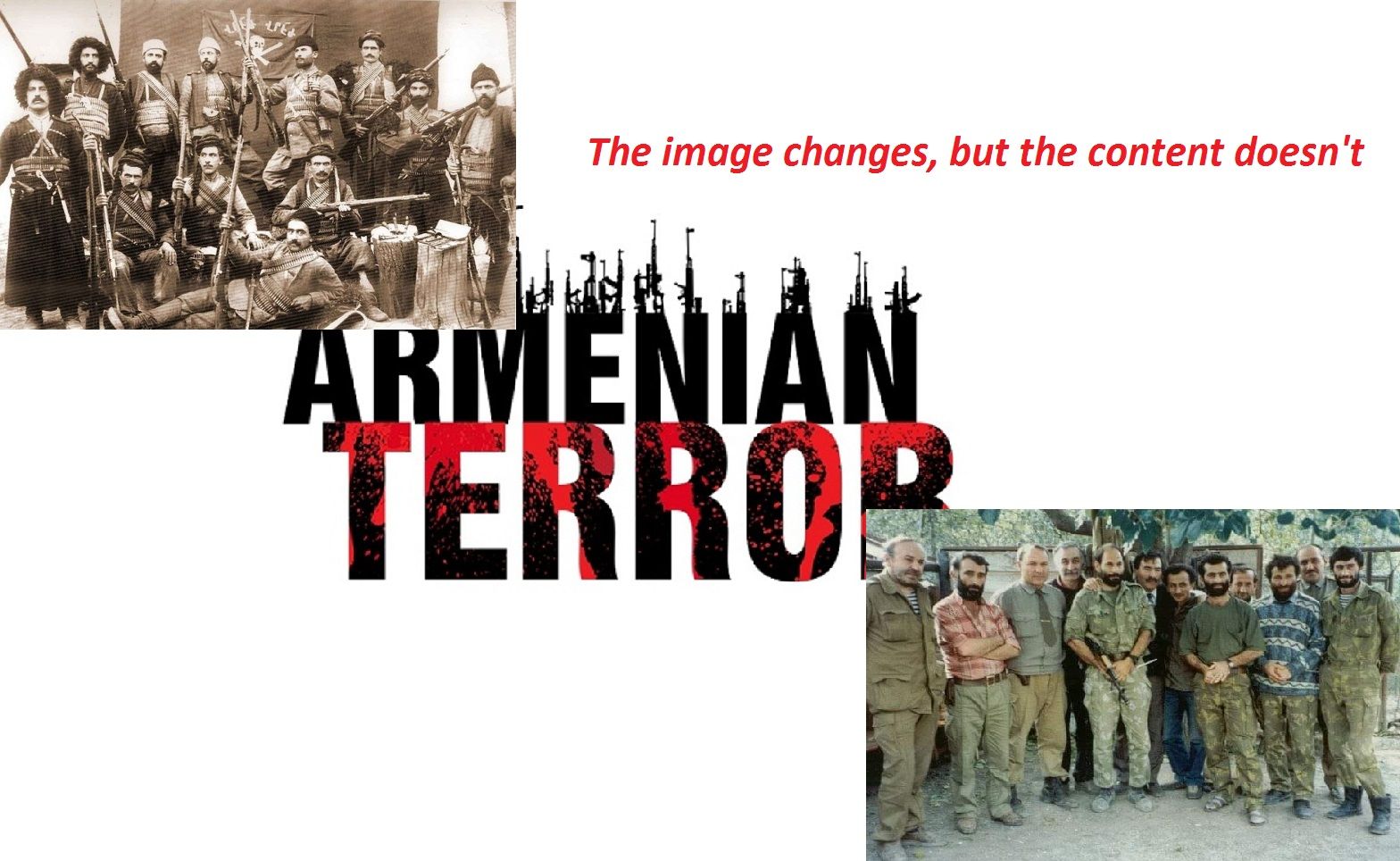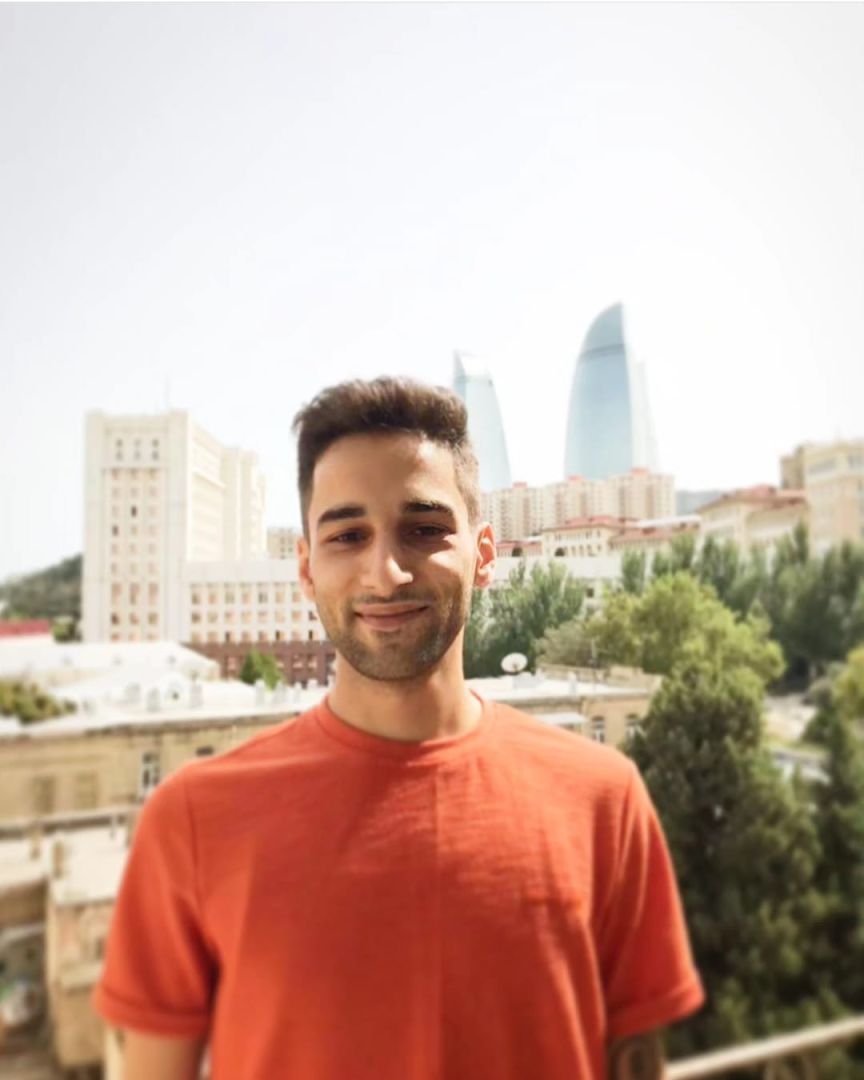Armenian terrorism: weapon more lethal than Nuclear Bomb

For centuries, even millennia, a force that has caused divisions in the world is still ruling over humanity. This force, which gradually invades human consciousness and drives societies to crime, has the power to lead to anger, brutality and finally terrorism. Inspired by that force today, murder, revenge and human attrocities have settled on the border with Azerbaijan under the name of Armenian nationalism.
Armenian terrorism is acts of systematic intimidation and individual revenge as one of the methods of activity of Armenian nationalist groups (organisations). Terrorism of Armenian nationalists was initially motivated by the false idea of fighting against the alleged discrimination, mass robberies and killings of Armenians in the Ottoman Empire by the authorities and Kurdish tribes, later - revenge for the so-called genocide of Armenians in Turkiye.
The term "Armenian terrorism" was first officially used in the United States in the August 1982 monthly bulletin of the U.S. Department of State.
Paul Wilkinson's famous 1986 book "Terrorism Against Democracy: The Liberal State" (second edition) has a chapter on Armenian terrorism on page 344.
Paul Wilkinson, (9 May 1937 - 11 August 2011), was awarded the Most Excellent Order of the British Empire, a British order of chivalry awarded for contributions to the arts and sciences, work with charities and social organisations, and public service outside the Civil Service. It was established on 4 June 1917 by King George V and comprises five classes in both civil and military branches, the two most senior of which make the recipient either a knight, if male, or a dame, if female. He was a British expert on terrorism, Emeritus Professor of International Relations and Director of the Centre for the Study of Terrorism and Political Violence at the University of St Andrews (CSTPV).
"There is irrefutable historical evidence that the most protracted, fanatical and intransigent campaigns of terrorist violence are those carried out in the name of national self-determination and justice for an ethnic group."
Although groups involved in terrorist attacks tend to be very small and operate underground, the fact that they claim to be genuine defenders of an entire ethnic community almost inevitably provides them with a broader and more loyal base of political sympathy and support, even if, as is usually the case, the nationalist movement as a whole contains many elements deeply opposed to terrorism.
According to the expert and author of the book, groups such as the Baader Meinhof Gang, the Red Brigades, and the Japanese Red Army proved "more ephemeral and vulnerable to a harsh government response".
None of these ideological revolutionaries actually succeeded in gaining mass support among the working class for which they supposedly fought.
Further on page 344, regarding the Armenian terrorism, the author writes:
"In contrast Armenian terrorism has been going on for over a hundred years. Their organisation-national forms, leadership and tactics admittedly change, but the origins of their terrorist violence lie deep in their national psychology and traditions, and in their desperate passion for the cause of national liberation.
The current Armenian terrorist groups are part of a very long tradition of resistance to the nations in the Northeast Turkiye and the former Armenian Soviet Republic."
When considering the facts, an important point is encountered here:
"The Armenian delegation will return to the East, taking with it the lesson that without struggle and without rebellion nothing can be achieved."
It is clear from the ideas that Armenian terrorism has developed itself from time to time in the form of an organization and has spread to the world in the form of large and small groups.
The following are terrorist organizations from Armenia.
The Armenikan Party: was established in
1885
The Hnchak Party: was founded in Geneva in 188
The Dashnaksyutun Armenian Federative Revolution
Party: was founded in Tbilisi in 1890
The Avengers of Armenian Genocide group commenced
activity in 1973
The Armenian Secret Liberation Army (ASOA): was
founded in Beirut in 1975
The Armenian Secret Army for Liberty of Armenia
(ASALA): the headquarters of the organization, founded in
1975, located in Beirut
The Geqaron: was founded by the ASALA in February
2001
The Armenian Liberation Movement (AOD): was
founded in France in 1991
The Armenian Liberation Front: is an integral part
of the ASALA, founded in 1979
The Orli Group: was established by Armenian youth
from France in 1981
The Armenian Genocide Justice Commandoes: was
founded in Vena during the congress of the Dashnaksyutun Party in
1972
The Armenian Union: was established in Moscow in
1988
The Democratic Front: operates in the USA, Canada,
and Western Europe
Apostle: was founded by the Armenian Defence
Union, consisting of Armenia, Syria, and Lebanon citizens on April
29, 2001
In light of today's days and events, already after the second Karabakh war, where Azerbaijan is the victor, having returned the sacred lands of its ancestors from the occupants, Armenian terrorism and nationalism made their activity more obvious. In spite of the humanitarian aid offered by Azerbaijan, on the Aghdam-Khankendi road, the inhabitants of the so-called 'Nagorno-Karabakh' do not accept the aid but demand their own food. The separatist regime in Garabagh blames Azerbaijan with various lies and excuses and engages in continuous provocations.
One of the recent events was the detention of one of the most organized members of those terrorist groups. The Armenian terrorist who committed genocide in Meshali was caught by the Azerbaijani Border Guard Service.
Despite on 12 November 2013, a ruling was issued to bring Khachatryan Vagif Cherkezovich as an accused under Articles 103 (genocide) and 107 (deportation or forcible transfer of population) of the Criminal Code of the Republic of Azerbaijan, the investigation did not know his whereabouts. As a result of search measures, on 29 July 2023, at the Lachin checkpoint located on the Azerbaijani-Armenian state border, servicemen from The State Border Service of Azerbaijan detained Vagif Khachatryan, who was trying to travel to the Republic of Armenia for medical treatment through the International Committee of the Red Cross.
However, all the evidence presented does not satisfy Armenia, which supports terrorism, for some reason. On the contrary, Armenia does not hesitate to defend a criminal who killed dozens of people 32 years ago. This means that Armenians have not changed and do not even want to change... The events of a hundred years ago until today show once again that Armenia has not yet recovered from the malady of nationalism and its tendency to terrorism.
Abbas Ganbay is AzerNews’ staff journalist, follow him on Twitter: @Noend33
---
Follow us on Twitter @AzerNewsAz
Here we are to serve you with news right now. It does not cost much, but worth your attention.
Choose to support open, independent, quality journalism and subscribe on a monthly basis.
By subscribing to our online newspaper, you can have full digital access to all news, analysis, and much more.
You can also follow AzerNEWS on Twitter @AzerNewsAz or Facebook @AzerNewsNewspaper
Thank you!

